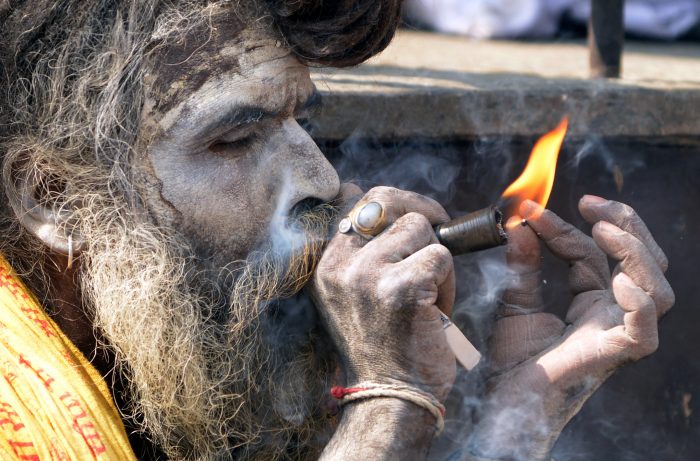Throughout history, each era tends to lend perspective, a cultural shift so to speak. Nevertheless, change occurs.
Cannabis history is rich in culture. In the past 100 years, it went from being a beautiful, bountiful crop with over 25,000 practical uses, to being twisted and contorted as a life altering, horrible plant that has been incomprehensibly labeled “the root of all evil.”
The new generations have spoken in favor of fairness and understanding. As a result, there has been some serious traction in changing the policies of cannabis legalization, which is beginning to become legal, both medicinally and recreationally, worldwide.
It’s an inspiring and wonderful time to be alive and witness the ushering in a bright and beautiful future for everyone.
The Change Has Begun
The first step to change is awareness, education, and good intentions. I’m happy to say you can see the tidal wave of love, self-awareness, and change spreading throughout the world with the younger, intelligent, and driven generations taking the helm and ensuring the very best for society.
It’s no longer conjecture, but a proven fact that this plant changes lives for the better on an astronomical scale. Every day, it seems like you’ll read a story how cannabis relieves an epileptic seizures, or how Rick Simpson Oil (RSO) smashes a patient’s cancer into oblivion, a soldier’s PTSD outbursts are controlled by lighting up and taking a second to find their bearings.
Research in various scheduled substances has begun to change the understanding, and even the legality of what society considered “Drugs.”
MDMA and Psilocybin have entered the final round of FDA evaluations for the treatment of various neurological and neurodevelopmental disorders as well. It’s no longer about treatment; it’s about finding cures. Curing once untreatable mental, emotional were, and even physical ailments are where we are today in medicine. Most of this sounds like science fiction but it’s reality, it’s present.
Prohibition, in general, began purely from greed, racism, and other nefarious means. The wrong people with soap boxes and a voice tricked congress into passing laws. Like the Marijuana Tax Act of 1937, to classify cannabis under pretenses to encourage extreme racism, justify the mass surveillance and incarceration immigrants and as always, to make a buck in the process. It’s disgusting.
Millions of lives have drastically changed due to the effects of the War on Drugs, which in retrospect, truly began in America with the outlawing of Marihuana during the Mexican Revolution of 1910-1911. The war brought an influx of immigrants into the United States.
Bigotry mixed with propaganda made surveillance and detention of Mexican immigrants much easier by banning something as culturally significant to Mexican culture as cannabis is.
Racist propaganda targeted cannabis and the Mexican people with very harsh rhetoric and strong provocations, for example, “A Mexican smoking Marihuana seduces children, goes on murderous killing sprees, and damages property.” Pretty strong hate speech.
After policy makers and the elite realized the immense power and control that prohibition and propaganda produced, it all gets a little dystopian like after that. Some men made millions, recessions and depressions, influence and power shifts; very spooky, unnerving things that seem stranger than fiction.
Now, we have strongly opinionated politicians trying to bring back antiquated 1930’s policies to undo all the hard work we’ve brought to fruition. Before we discuss the nitty gritty politics and legality, let’s step into the time machine and study the rich history of cannabis up to modern times, just to illustrate how mad prohibition is and, hopefully, awaken some minds to the truth.
5000 B.C. to 2000 B.C.
To answer the question of who started using cannabis first, well, everyone did!
Archeological findings have pegged cannabis usage throughout history by almost every single civilization on every continent from 10,000 B.C. onwards.
Due to the lack of historical records, we will start off at 5000 years ago; The Chinese Emperor Shennong wrote countless papers on the medicinal values of cannabis for treating gout, malaria, and arthritis. The Mandarin translation of Huo Ma is literally “Fire Hemp.”

Emperor Shennong
Hemp was also incredibly important to Dynastic military industrial complexes.
Hemp fiber is naturally durable and has a high tensile strength, Chinese archers knew this and made their bowstrings out of hemp, Chinese opposition forces had weaker bamboo bowstrings. If you know a thing or two about Iron Age warfare, you’ll know the side that can shoot the furthest, wins.
I thought this next Chinese invention was kind of mind bending, not because of the invention itself, but the origin story is just interesting as hell. Paper, we use it every day in some capacity. We think of paper as a wood byproduct, but the first Chinese inventors made the first paper sheets out of hemp fiber and mulberry bark. Hemp paper as a Chinese invention then spread to Japan around the 5th century and west into the Middle East and Eurasia through conflict and Chinese merchant traders around 10th century A.D.
Cannabis seeds, Huo Ma Ren, is a traditional Chinese herb used to treat fever, moisten the intestines, and treat constipation. The book “The Shu King” records that clothing and textiles were primarily constructed of hemp fiber in 2300 B.C. Archeologists have discovered fragments of hemp fiber and rope in burial chambers dating back to the start of the Chou Dynasty in 1122 B.C.

Fragments of Chinese hemp paper (circa 140 B.C.)
2000 B.C. to 1500 A.D.
Cannabis usage then spread to India, where people have used it recreationally since 2000 BC.
The Indian people have a rich history of cannabis use, using resin, flower, referred to as “ganja”. They even have a form of cannabis infused milkshake, Thandai, which is consumed during religious festivals.
If you’re familiar with Rigveda, the legend states the plant Soma is “The Creator of the Gods.” Endo-mycologists have speculated the plant Soma is Psilocybe Cubensis mushrooms. Vedic scholars have speculated Fly Agaric mushrooms
Based on Tibetan text, Cannabis Sativa, Dekkan Hemp, or Hibiscus Cannabinus can be traced back to a shamanic Sanskrit drink Soma, also known as bhang.
By 500 AD, cannabis had already spread into the Middle East, by the Scythians, who then carried cannabis from Middle Eastern empires into modern Russia and Ukraine. The half mystic, half Muslim Sufis are credited with the cultural and spiritual implementation of cannabis into rituals and ceremonies designed to transcend our consciousness and reach enlightenment.
Some of our spiritual readers will be familiar with the 13th-century Sufi mystic and poet, Rumi. Universalism, self-love, and self-awareness are all tenants of Sufism, things which the Islamic orthodoxy of the time didn’t promote.
Eventually, Sufism became a clear threat to Islam and was outlawed. Islam then stated that the Quran imposed the ban of alcohol to all mind-altering substances, alas cannabis.

A Sufi Devrish
During the Crusades, 11th-century scholar Hasan Ibn Sabbah acquired a mountain fortress, Castle Alamut, in his native region of southern Persia after being driven from his studies in Cairo.
Historically, not much is known about Sabbah. The legend of his secret society of Hashshashin operatives is how his legacy lives on. The Hashshashin were a shadow organization of cannabis smoking clerics and assassins. The word assassin itself even derives from the use of hash.
Records of the travels of Marco Polo, beginning in 1271, gives firsthand accounts of the Assassins and their use of hashish. There is much speculation that the effect of these assassins and their penchant of smoking cannabis before battle has been one of the direct causes of the first Middle Age prohibitions of cannabis by the Catholic Church and empires across modern Asia and Europe.

Site and remnants of Castle Alamut
Germanic Tribes acquired cannabis seeds through conquest and pillaging in the east. Records show Greek physicians prescribing medical cannabis, and the Jewish Talmud goes in depth when describing the euphoria of smoking cannabis.
Archeological findings in modern day Ethiopia have shown the smoking of cannabis in pipes began around the year 1300, so we know cannabis usage has spread from the Middle East to the rest of Africa by this time.
By the late 1500’s, cannabis shows up in various French and Portuguese medical texts, noble edicts issued by King Henry VIII fining kingdom farmers for NOT growing hemp, and records of Angolan slaves introducing the crop to South American sugar plantations.
The New World to Industrial Era
When the English settled Jamestown in 1611, they brought cannabis alongside their tobacco and corn crops.
The early colonials were incredibly resourceful and began growing cannabis for the King in the settlements of Caribbean Port Royal, Virginia, and Plymouth. Through immense production, innovation followed, and colonists found thousands of uses for hemp aside from smoking, which was considered to be a lower class usage of the crop.
Hemp fiber was commonly used to make rope, textiles, paper, and sails. By the time the Revolutionary war kicked off, Founding Fathers and future presidents George Washington and Thomas Jefferson were cannabis farmers. A few decades later, cannabis plantations flourished in the states of Mississippi, New York, California, South Carolina, and Kentucky.
Across the Atlantic, France was met with total cannabis prohibition when Napoleon observed lower class Egyptian citizens using hash and cannabis recreationally. His French soldiers brought the drug with them upon their return and introduced recreational usage to France.
Prohibition Era to Now
It wasn’t until the mid-1800’s, and the early 1900’s when prohibition overtook the United States.
Believe it or not, before the plant was demonized, you could find medical cannabis extracts, bud, and other forms of the plant at any general store and pharmacy from the 1840’s to late 1915.
It wasn’t until 1906 when the U.S. Pure Food and Drug Act passed, which introduced strict labeling and classification of products with alcohol, cocaine, opiates, and cannabis.
In 1910, the Mexican Revolution began, introducing a massive influx of Mexican immigrants into the United States, most of who smoked cannabis recreationally, presenting the concept to the American public for the first time on such a profound scale.
Three years later, the Harrison Act was passed, defining cannabis usage as a crime. Around the time the Harrison Act passed in Congress, scientists at the United States Department of Agriculture created a method of extracting and pressing hemp into a pulp, then pressing the pulp into paper. This help pulp extraction method yielded four times more paper per one acre than four acres of trees converted into traditional wood pulp over a period of 20 years. The production of hemp paper was a much cleaner process, using hydrogen peroxide to bleach the hemp paper, vs. Dioxin in the wood pulp bleaching process.
Cannabis saw a brief rise in popularity as an alcohol alternative during the prohibition of alcohol until 1933, when alcohol was legal again, total cannabis prohibition shortly followed.
The wealthy and powerful, such as journalist, businessman, and master propaganda master, William Randolph Hearst began the demonization of cannabis with the 1936 film Reefer Madness.
Hearst didn’t stop there, a series of targeted news stories bringing up the dangers of cannabis, which displayed cannabis users as violent, impulsive, minority, and as a total menace to society were published to spread fear. Although we now know Hearst had ulterior motives, like a 20-million-dollar stake in the timber industry, which hemp threatened, U.S. Congress passed the Marijuana Tax Act, which utterly criminalized the production, cultivation, and use of cannabis.
The passing of cannabis prohibition came as a huge shock to Americans because cannabis, slyly labeled under a new name, cannabis, a huge crop for American farmers, was now illegal. The Boggs Act of 1951 introduced harsh increases in narcotics penalties and mandatory sentences.

William Randolph Hearst
Final Thoughts
As far as the rest of the story goes, harsher, crazier laws were introduced worldwide resulting in the utter demonization of cannabis in regions where up until a hundred years ago, was a vibrant part of almost every culture on the planet.
Thankfully these antiquated, racist, and ignorant laws and mindsets are beginning to change. Year by year, cannabis prohibition is starting to fade in favor of legalization of both medical and recreational usage all over.
We are truly ushering a new age of understanding and acceptance of these natural medicines and for that, we, as one can begin to see the bright horizons ahead for us all.


